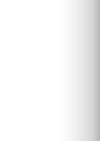


Dordab T, Sourinejad I, Nazemi M, Ghasemi Z. Assessing the antifungal activity of the steroids from the liver of the Persian Gulf spot tail shark Carcharhinus sorrah (Müller & Henle, 1839). JFST 2023; 12 (3) :287-296
URL:
http://jfst.modares.ac.ir/article-6-67394-en.html
1- Department of Fisheries, Faculty of Marine Science and Technology, University of Hormozgan, Bandar Abbas.
2- Department of Fisheries, Faculty of Marine Science and Technology, University of Hormozgan, Bandar Abbas. , i_sourinezhad@yahoo.com
3- Persian Gulf and Oman Sea Research Center, Iranian Fisheries Science Research Institution, Agriculture Research, Education and Extension Organization, Bandar Abbas.
Abstract: (1428 Views)
The present study aimed to isolate the steroids and fatty acids from the liver of the Persian Gulf spot tail shark Carcharhinus sorrah and to assess their antifungal activity. Extraction was done by methanol 70% and then, the lipids were separated through column chromatography with silica gel. Identification of the extracted lipids was done by thin layer chromatography and gas chromatography coupled with mass spectrometry. Then, antifungal activity of the steroids was investigated through determining the minimum inhibition concentration and minimum fungicidal concentration by tubular dilution method against Aspergillus fumigatus and Candida albicans. Identification of the extracted compounds by GC-MS confirmed the presence of these steroids in the shark liver. The identified steroids included compounds of Y-Sitosterol, Desmosterol and Squalene, which showed different results regarding the growth inhibition and fungicidal effects against the microorganisms at different experimental doses. Desmosterol and Squalene at minimum concentration induced the highest inhibitory effect on the fungus but Y-Sitosterol induced the highest inhibitory effect on the yeast. Squalene showed fungicidal effect only on the fungus and totally, A. fumigatus was more sensitive to the antimicrobial activity of the liver compounds than C. albicans. In conclusion, promising results were found regarding the antimicrobial activity of the lipid compounds derived from Persian Gulf shark liver, revealing the importance of more comprehensive investigations of these natural compounds for the synthesis of biomedicines from the marine organisms.
Article Type:
Original Research |
Subject:
Biotechnology Received: 2023/02/8 | Published: 2023/10/14
Send email to the article author































